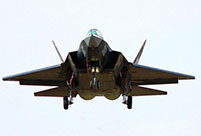 Top 100 beauties in the world!
Top 100 beauties in the world!
 Gallery: Who is the most beautiful one?
Gallery: Who is the most beautiful one?
 If you like autumn, put your hands in the air!
If you like autumn, put your hands in the air!
 Fan Bingbing's "Queen style" in new play
Fan Bingbing's "Queen style" in new play
 Lingerie show at 2014 Miss China
Lingerie show at 2014 Miss China
 J-10 fighters show aerobatic stunts in smog-free sky
J-10 fighters show aerobatic stunts in smog-free sky
 Charming contestants of Shanghai Int’l Model Contest
Charming contestants of Shanghai Int’l Model Contest
 Most amazing chi-pao beauties
Most amazing chi-pao beauties
 7 deadly animal attacks
Russia to launch 70 Proton rockets by 2020: official
7 deadly animal attacks
Russia to launch 70 Proton rockets by 2020: official |
| Illustration: Liu Rui/GT |
Even the most creative novelist wouldn't be able to devise a story about how a free trade zone could really work out or even survive in the Asia-Pacific region without China's participation. The just concluded APEC forum met with expected success, endorsing the necessity of building a free trade system in the Asia-Pacific, which is in line with the trend of the regional development. The US-led Trans-Pacific Partnership (TPP), which is still under discussion, cannot shield itself from the process either.
So far, TPP negotiations have included 12 countries in the Asia-Pacific. China is the biggest trading partner of eight of them, namely Singapore, Peru, New Zealand, Chile, Japan, Vietnam, Malaysia and Australia. As for the US, Mexico and Canada, China ranks second in their lists of trading partners.
The reality is that China has already outdone the US in trade volume with almost every other APEC member, including New Zealand, Singapore, Chile and Brunei, the four founders of the TPP.
In these circumstances, Washington still cherishes the wishful thinking that it is able to hammer out a US and Japan-led free trade system by means of the TPP as the framework, by which they can bend China's will to their wishes so that it will follow their lead after joining the system.
On November 7, The New York Times published an article titled "Who decides Pacific trade?" by Dennis C. Blair, the former commander-in-chief of the US Pacific Command. The author thinks that TPP negotiations should be concluded as soon as possible instead of both the US and Japan being fettered by endless discussions on trivial issues. As the author writes, "a TPP agreement will establish American-Japanese leadership in setting a course that will enable greater prosperity throughout the Asia-Pacific region."
This point of view does not lack supporters in the US. It suggests that only by reinforcing the US-Japan alliance can a new system to counterbalance China's rise be brought out. It also sends a warning that once China gains an upper hand in the Asia-Pacific region as an agenda-setter, the US will be forced to give up its conventional political criteria, which is the last thing Washington wants to do.
The major concern that drives the US to turn its back on the China-led Asian Infrastructure Investment Bank (AIIB) is that it fears Beijing will set new rules to make loans to other regional countries so as to impose more political influence on the region.
On surface, the AIIB has triggered a competition for regional leadership, but in essence, it offers a new vision that can better suit the future development of most Asian countries, which is the reason why China is dedicated to advancing this project.
The emerging economies represented by China have rendered many rules obsolete. The new rule-making process has created an unprecedented foundation for Asia-Pacific countries to conduct cooperation.
The new system needs adjustments, and the old one should be reformed. Asia will not find a way to go back, so the US should adapt to the new changes, sitting at a table with China to discuss how to build a new future for this region.
A sensible choice the US can make is to be more actively engaged in cooperation with emerging economies, such as in the projects proposed by China, especially in terms of the rule-setting of business and trade.
The facts have shown that rules which are made without China's participation will not end up well. Some 30 years ago, the US might be able to make them work, but now, it's very unlikely to do that.
 World Pole Dance Championship in China
World Pole Dance Championship in China In pics: PLA stages live-fire drill in NE China
In pics: PLA stages live-fire drill in NE China  59-year-old Liu Xiaoqing still looks stunning
59-year-old Liu Xiaoqing still looks stunning  Standard faces for each countries in the world
Standard faces for each countries in the world Shocking! Photos of Chinese fighters revealed
Shocking! Photos of Chinese fighters revealed Images of angels in white: At work v.s off work
Images of angels in white: At work v.s off work  Post-85s female pilots and their mission
Post-85s female pilots and their mission Netizens fall in love with champion swimmer Ning Zetao
Netizens fall in love with champion swimmer Ning Zetao Vibrant 21-year-old and her own Cheongsam brand
Vibrant 21-year-old and her own Cheongsam brand Top 10 most dangerous jobs in the world
Top 10 most dangerous jobs in the world  Top 10 fifth generation jet fighters in the world
Top 10 fifth generation jet fighters in the world Top 10 Chinese goddesses
Top 10 Chinese goddesses  Top 20 hottest women in the world in 2014
Top 20 hottest women in the world in 2014 Top 10 pure beauties in showbiz
Top 10 pure beauties in showbiz  Top 10 world's highest-paid models 2014
Top 10 world's highest-paid models 2014 The most gorgeous Chinese women
The most gorgeous Chinese women Top 10 most handsome faces in Asia
Top 10 most handsome faces in AsiaDay|Week|Month